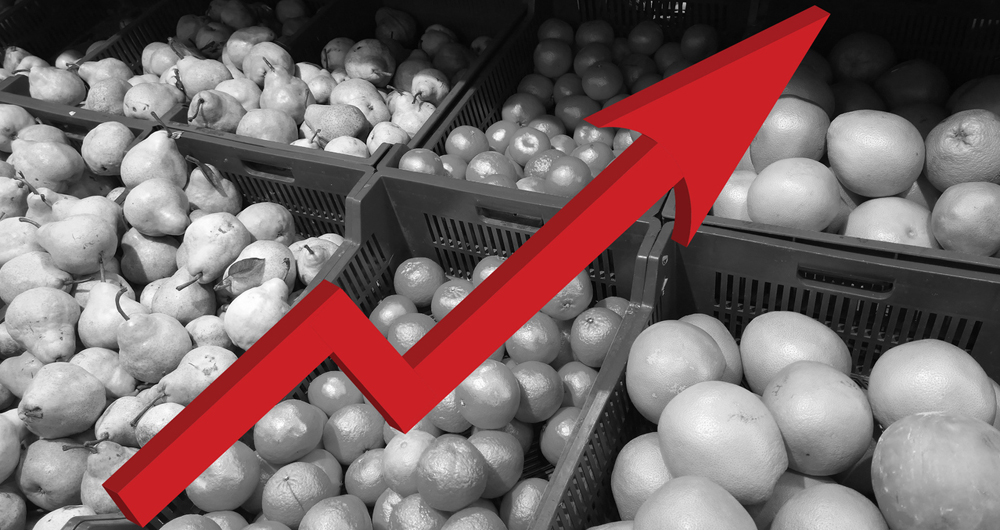TOP FIVE COVERAGES THAT INFLATION CAN AFFECT
When costs do normalize, there’s no chance they’ll return to earlier levels
While the cost of medical treatments and other factors
can devalue the benefits of a term life policy,
home appreciation, material prices, and labor costs could
render policy limits insufficient for necessary repairs.
by Michael Wayne
By early December of last year, signs pointed to the notion of “transitory” high inflation being anything but transitory. As a consumer, I had difficulty finding certain consumable goods throughout the pandemic. Several factors were to blame. Some of those goods have been readily available for several months now, though certainly not without putting greater dents in my wallet.
Hampered by supply chain bottlenecks and fiscal spending, the Federal Reserve isn’t able to combat rising inflation with boosted interest rates as a magic-bullet response. Simply put, this is “long-haul” high inflation, and when costs do “normalize,” the likelihood is nil that they will return to what they were before we saw nearly 7% inflation in November 2021. To that end, here are the Top 5 coverages that inflation can affect, coverages with either short or long durations.
Life insurance
Policy duration means that life insurance, and in particular term life, provides one of the best “visual” coverage examples when talking about inflation. As this is pure insurance, and since savings and investing provisions are not in play, an example with simple numbers to represent the premium and the benefit is helpful.
For our purposes, we will suppose a 30-year-old man buys a $100,000 policy with a $1,000 annual premium. If he pays on the policy for its full duration, he will have paid in a maximum of $30,000. If he passes away at some point during those 30 years, someone he designates will receive $100,000. If he is still alive at the end of that 30-year period, it’s time to find another way to ensure his designee is taken care of moving forward.
While our hypothetical buyer’s cost is fixed for the duration, inflation affects his dollars’ purchasing power and the value that his $100,000 benefit will ultimately have for those he leaves behind. To combat inflation, the insured could purchase an additional rider. The insured could also buy a rider to recoup his payments for outliving the 30-year term.
Inflation protection insurance
The name here is somewhat self-explanatory. Inflation protection insurance stipulates that a benefit’s value rises by an agreed-to percentage over a designated time. As you might imagine, long-term policies are a prime candidate for this coverage. Someone who requires disability insurance and has concerns about rising medical care costs in the future could benefit from inflation protection insurance. The possibility of coverage limits being exceeded due to excessive costs is a purchasing motivator. While this coverage can be beneficial, it does not preclude premiums from rising.
Health insurance
In the grand scheme of things, 2005 wasn’t that long ago. Those who don’t know any better, however, would likely be shocked to discover that the U.S. Bureau of Labor Statistics only began tracking health insurance costs that year. Rising health care costs turned rising insurance costs into an issue. Since December 2005, the cost of average items in the Consumer Price Index has paled in comparison to health insurance costs.
Homeowners insurance
Inflation can affect homeowners insurance in multiple ways, not the least of which is how much the coverage itself costs. Labor and repair expenses drive that cost. Not surprisingly, the more expensive it is for home repairs, the more coverage rates rise. As with most things, location plays an important role in determining costs—local construction costs, burglary rates, hurricane and flooding frequency, earthquake possibilities, building codes, even how close the nearest fire station is are contributing factors. Simply stated, the coverage for your Chicago penthouse will be much different than the coverage for your Dayton, Ohio condo.
Much the same as a term life policy, homeowners insurance is subject to similar inflation effects. While the cost of medical treatments and other factors can devalue the benefits of a term life policy, home appreciation, material prices, and labor costs could render policy limits insufficient for necessary repairs.
Auto insurance
A rise in auto insurance premiums is typically a harbinger of rising inflation. Like all symbiotic relationships, however, increases in inflation drive a rise in auto insurance rate. During the pandemic, many drivers saw drops in their premiums for the simple reason there were many few drivers on the roads. While that was a positive of sorts that resulted from COVID-19, the virus’ other effects were less beneficial.
The pandemic affected manufacturing of all types, and part of that disruption has been a worldwide chip shortage. That means that fewer vehicles are being produced. With fewer people traveling during the pandemic for business and leisure, car rental companies sold off large portions of their fleets and aren’t able to replenish them currently. Auto parts are in short supply, and the workforce with the knowledge of how to repair damaged vehicles has been decimated. When these factors are all combined, it is easy to see how inflation affects auto insurance.
The author
Michael Wayne is an insurance freelance writer.






